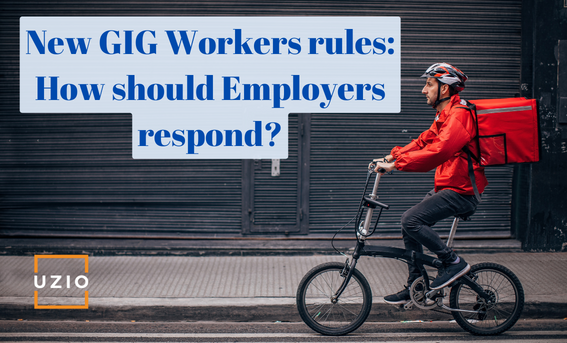
How Should Employers Respond To New GIG Workers Rules from DOL?
Quick links
-
Introduction
-
Background
-
What Are The New Rules for Gig Workers?
-
What happens next?
-
How Should Employers Respond?
Introduction
This week the Biden administration announced new rules for classification of Independent Contractors who are an integral part of the Gig economy. The news media coverage would have you believe that the new rules will be like an albatross around the neck of the Gig economy companies like Uber, Lyft etc. The stocks of the Gig economy companies took quite a beating when the news of these rules came out.
In this article, we will attempt to bring a little perspective to the discussion of the new rules, explain what is being proposed, how it is different from what existed earlier and how employers should respond.
Background
The US Department of Labor (DOL) is proposing new regulations for classifying whether a worker is an employee of a company or an Independent contractor (IC) under the Fair Labor Standards Act (FLSA).
It is important because under FLSA, if a worker is classified as an employee (nonexempt employee to be precise), the employer is required to pay at least the Federal minimum wage and overtime pay and is also required to adhere to other FLSA regulations with regard to that employee. On the other hand, if the worker is classified as an Independent Contractor, FLSA rules and regulations do not apply.
The Gig economy employers like Uber, Lyft, GrubHub etc. employ millions of workers and these workers are currently classified as ICs, not employees of these companies. If under the proposed new rules, these workers are to be classified as employees, that completely upends the business model of these companies.
What Are The New Rules for Gig Workers?
Since the enactment of FLSA in 1938, there has been an on-going debate about how to classify workers. One of the reasons for this is that FLSA defined the terms such as “Employer”, “Employee”, “Employ”, but never defined the term “Independent Contractor”.
In absence of a clear definition, the term IC is generally referred to workers who, as a matter of “economic reality” are not economically dependent on their employer for work and are in business for themselves. To apply the economic reality test, the courts and the DOL used to consider a “totality-of the-factors” such as:
- The opportunity for profit or loss
- Investment
- Permanency
- The degree of control by the employer over the worker
- Whether the work is an integral part of the employers business
Skill and initiative
In January 2021, under the previous administration, the DOL changed the criteria. They designated the following two factors as “core factors”.
- Nature and degree of control over the work
- The opportunity for profit and loss
As per the January 2021 rule, if these two core factors pointed towards the same classification, it is highly likely that it is the workers accurate classification.
The 2021 rule tilted the balance in favor of Gig companies. More of their workers would have been classified as ICs under these rules.
What the Biden administration is doing now is to rescind the 2021 rule and go back to the original framework of “totality-of-all-factors” without giving additional weight to any one factor. They are not creating any new rules from scratch. They are rescinding the rules of the Trump administration and going back to the rules which had existed previously.
The new rules being proposed at the Federal level (totality-of-factors approach) are different from the California law AB5, enacted on January 1, 2020, which is much more stringent with respect to classification of ICs. The California law uses an ABC test. Under this test, a worker is an IC only if he or she:
- (A) is free from the control and direction of the hiring entity in connection with the performance of the work, both under the contract for the performance of the work and in fact, and
- (B) performs work that is outside the usual course of the hiring entity’s business, and
- (C) is customarily engaged in an independently established trade, occupation, or business of the same nature as that involved in the work performed.
All three prongs of the ABC test must be satisfied for workers to be independent contractors. In other words, to be an IC a worker must: be free from control + work outside the hiring firm’s usual business + have an independent business. As you can see, under California AB5 law, it is very difficult for Gig economy workers to be classified as ICs.
What happens next?
As should be clear from the description above, the new rules are not meant to classify all Gig workers as employees. The new rules are going back to the criteria for classification of ICs which has been in place for almost seven decades.
The new rules will certainly face court challenges. It may remain stuck in lower courts for months if not years. If the case does go up-to the Supreme Court, considering the current conservative majority on the court, it is likely that these rules may never see the light of the day.
Recommended Reading: How to Choose the Right Payment System for Your Gig Workers?
How Should Employers Respond?
First, there is no need to panic for Gig economy employers. What they should not be doing is to immediately start looking for ways to convert their ICs to employees. As mentioned above, these rules may never be implemented. As a worse case scenario, if the rules are not blocked by the courts and are implemented, employers should review the “totality-of-all-factors” framework being proposed by new rules and evaluate how their ICs will fare if these new rules were applied to them. Based on that analysis, they should make decisions about classifying their ICs.





